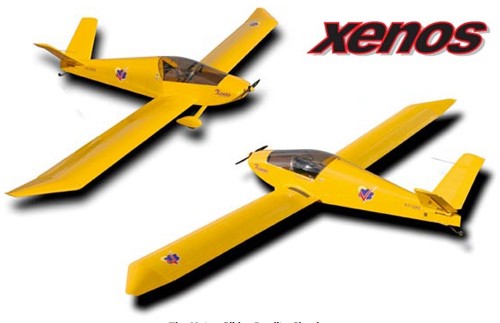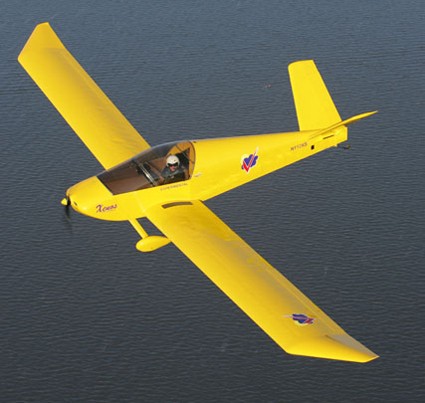

Author Murry Rozansky did a fine job of evaluating the Xenos but since I had the chance to go for a late-in-the-day flight with Jeremy Monnett, I wanted to add just a few words on the company’s motorglider. The soaring pilot in me just had to see how the long-winged version of the Sonex felt aloft.
After landing with John, I flew with son, and Sonex general manager, Jeremy, in the company’s Oshkosh-based Xenos. The one Rozansky flew is based in Tehachapi, California with Sonex engineer, Pete Buck. The Wisconsin Xenos used the same AeroVee engine as the Waiex whereas the Xenos out west is powered with a Jabiru 3300.
One notable difference is the ailerons, which have much more span and much less chord than the Waiex. And naturally, a long gliding machine like this adds spoilers to the control mix.
As we taxied out, Jeremy tended not to use the brake; he just retarded the throttle, which seemed to slow down taxi speeds quickly. When you deploy the spoilers fully, you begin to activate the brake. And, conversely, when you activate the brake you’re deploying the spoilers. It’s a coordinated system that also simplifies the cockpit controls.
With temperatures slightly higher than standard atmospheric, initial climbout off the runway was about 700 fpm at 55 mph. The noise level seemed similar to the Waiex.
It was too late in the day to sustain altitude as I’d seen Jeremy doing when he was solo and I flew with John in the Waiex. The low sun was also not going to allow a long flight. But when the Oshkosh tower cleared us to land, we were well out over the huge Lake Winnebago and Jeremy suggested we shut down the engine.
I was delighted. Suddenly the peaceful quiet allowed me to hear the sound of air whooshing by the canopy. We glided easily for several miles of pattern entry and set up for a landing without anxiety. All this occurred from the rather low starting altitude of about 2,300 feet AGL over the lake. It’s one reason why some power pilots like motorgliders. The can explore soaring flight and still have a big safety margin if the engine should fail during a motorized trip.
Once on the ground, Xenos taxies easily and we returned to the Sonex campus with no more effort than a conventionally winged aircraft. Flying with Jeremy for a half hour completed my tour of the current Sonex lineup. All I can do now is hope for a longer ride in Xenos during some real soarable conditions.


Leave a Reply